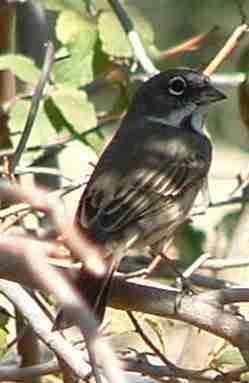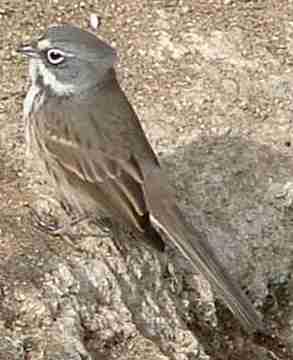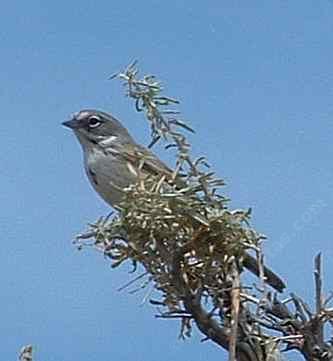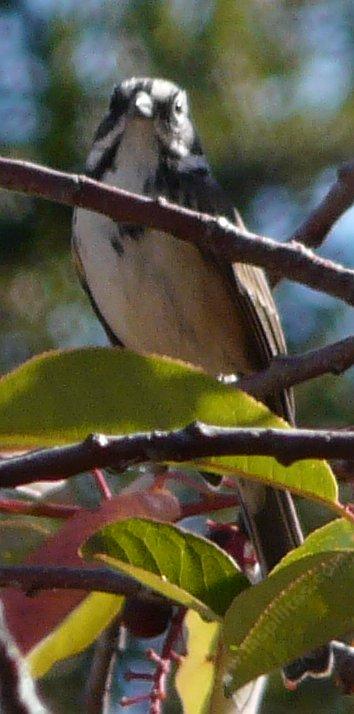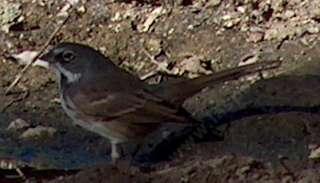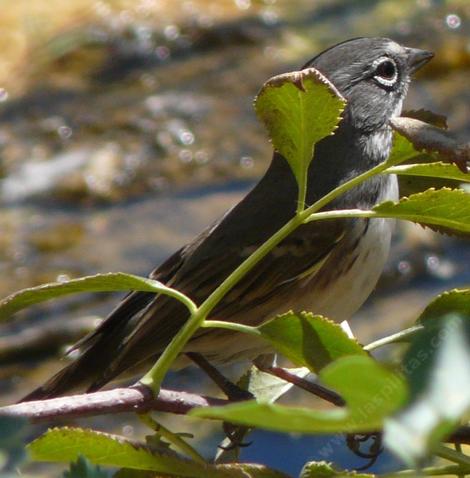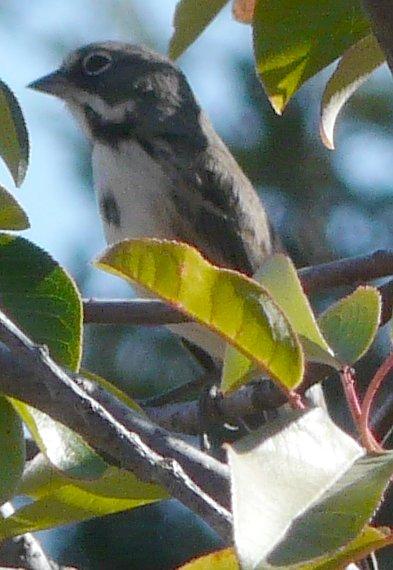Sage Sparrow, Amphispiza belli
There are several subspecies of Sage Sparrow. Their coloration and behavior is noticable different. The coastal form is smaller and darker but has little or no lines on breast and the black and white coloration is clear. The coastal Amphispiza belli belli behaves more like a wrentit than a sparrow hiding in the foliage and focused on the pond. The southern inland form seems to hang out more in the open, the pictures here were taken next to a puddle in the nursery. The Southern inland form, Amphispiza belli canescens, is more brown than gray, with many brown lines on the brest. It behaves like a Tohoe or White Crowned Sparrow.. The desert form Amphispiza belli nevadensis, is usually up on a bush or tree watching you. I thought it was a funny looking Jay, as it acted like a Jay.It was only an accident that we got all three pictures. The desert picture was the only bird we saw along the desert edge by Lucrene back in 2003. The interior form was at the Santa Margarita Nursery after 5 years of drought, the coastal form showed up the next year after we got rain and much of the rest of California did not. We bought a bunch more bird books before we figured out that the coastal form did not look like the others.
Diet of the Sage sparrow
During the breeding season the sage sparrow eats a mixture of seeds, insects and spiders. During the non breading season the sage sparrow eats mainly seeds. They glean from low shrubs or herbs.
Habitat/ Plant community used by the Sage sparrow
The sage sparrow likes dense brushy habitats.
The Sage sparrow nests on the ground under cover of shrubs. They will occasionally nest on the ground.
Range of the Sage sparrow
The sage sparrow is found in California, west of the central valley in shrubby habitats. They occupy the southern deserts in the winter.
